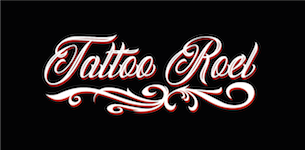Post-treatment
Post-treatment
General
- Wash your hands before caring for a wound.
- Remove the plastic wrap (cling film).
- Wash the tattoo gently, using clean hands only, cold or lukewarm water and a hypoallergenic mild soap.
- Rinse soap thoroughly. Pat the tattoo dry with a clean towel or paper towel, or allow the tattoo to air dry. Do not wipe or rub dry.
- Apply a thin layer of hypoallergenic aftercare ointment.
- Cover the tattoo again with new plastic wrap.
- Repeat steps 1) through 5) two or three times a day for (2 or 3) days. A soft, supple crust will form and cover the tattoo.
- After three days, continue to keep the tattoo greasy with a hypoallergenic aftercare ointment until the crust is completely gone. Do not cover the tattoo again.
- When the crust has completely disappeared, apply a perfume-free moisturizing lotion several times a day for (2 to 3) weeks to prevent the tattoo from becoming dry.
Succes, enjoy & remember….
It’s always a good day for a new tattoo
Activities to avoid during the recovery period
- No bathing, swimming or sauna use until the tattoo is fully healed. Showering is allowed.
- Avoid sun exposure and artificial tanning (sunbed) for at least two months. If sun exposure cannot be avoided, high protection factor sunscreen products can be used, but only on a fully healed tattoo. However, the protection they provide is limited. A tattoo that has not fully healed should not be exposed to direct sunlight and, if exposure cannot be avoided, should be covered. Sunscreen products should only be used on fully healed tattoos.
- Clothing worn during the healing period that comes into contact with a freshly applied tattoo should be clean. Preferably cotton.
Do not remove scabs or loose skin during the recovery period and avoid scratching. - Skin disinfectants (antiseptic) can interfere with the healing process. Antibiotics can cause bacteria to become resistant to antibiotics and can lead to allergies. Do not use these without medical advice.
Descriptions of signs of normal healing and signs of infection and allergy.
Normal signs
- Moisture discharge (of clear or pink liquid mixed with tattoo ink) is a normal occurrence during the first few days. In case of excessive secretion, the dressing becomes saturated and starts leaking. In this situation, it is advised to change the dressing more often.
- Redness within the tattooed area.
- Slight swelling is normal for the first few hours to days, but should diminish day by day.
- Within the first 12 hrs after tattooing, fever or chills may occur; if this persists or becomes severe, it should be considered a sign of infection and immediate medical attention should be sought.
Abnormal signs / Signs of infection
- Increased secretion of fluids;
- secretion of yellowish or greenish sticky fluid;
- an unpleasant odor;
- increasing painful redness spreading around the tattooed area;
- increasing throbbing and burning in and around the tattooed area;
- immobility or difficulty moving a limb, finger, toe or other body part;
- red lines spreading across the skin; for example, red lines running from a recent tattoo on the wrist or hand and continuing down the forearm and into the upper arm. This may be related to blood poisoning. If this is observed, immediate medical attention should be sought;
- High fever or persistent fever and flu-like symptoms are signs of serious infection. If diagnosed, immediate medical attention should be obtained.
How to act in case of infection?
Consult your doctor or a local health professional. The tattoo artist should also be informed.
People in a high-risk category:
People with certain conditions (e.g. diabetes, immunosuppression, etc.) are at greater risk of wound infection. They should seek immediate medical attention if there are any signs of infection.
Signs of allergy
Clients, especially those with a preexisting contact allergy to certain substances (e.g., nickel, preservatives, antiseptics, and lanolin), may experience an allergic reaction to the tattooed area and in its vicinity that sometimes spreads throughout the body. An allergic reaction may occur within hours, weeks, months, or years of tattooing and may manifest as a rash with redness and itching, sometimes blisters, and the wound fluid is clear.
